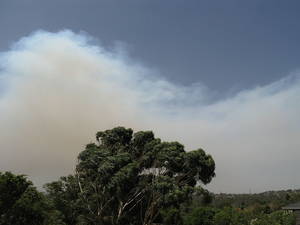Nineteen fire-fighters were killed in Arizona this week tackling a ferocious wildfire that had got out of control. But how do blazes like this start  and how can we tackle them? Here's the Quickfire Science with Hannah Critchlow and Kate Lamble...
and how can we tackle them? Here's the Quickfire Science with Hannah Critchlow and Kate Lamble...
Wildfires may be rare in some parts of the world, like Britain but an average of 50,000 start every year in Australia and over 4 million acres of woodland are destroyed annually in the United States
Wildfires are started after a period of hot dry weather converts green vegetation into a fuel source for a fire to spread, all it needs then, is a spark.
Up to 80% of wildfires are caused by humans - either through arson, or poor fire management such as unattended campfires or even just a discarded cigarette.
Natural triggers, such as lightning or even sparks caused by rockfalls can also start a fire.
Once started, a fire's spread will be affected by the weather, the wind and the amount of fuel in the surrounding area. Under the right conditions they can move at a speed of up to 14 miles per hour.
When a fire starts we can tackle it by using aeroplanes and helicopters to drop large amounts of water or flame retardant chemicals, including phosphate fertiliser, over the blaze to try and slow it down.
On the ground, firefighters also spray the fire with water or chemicals including phosphate fertiliser.
Firefighters can also try and reduce the amount of fuel available to keep the fire burning - by creating a 'fire-break', removing vegetation in order to contain the fire.
They can also reduce the available fuel by starting back-fires - fires which burn towards the wildfire - using up any potential fuel in their path.
Some people think that by stopping small-scale wildfires in their tracks quickly we might actually be making fires more dangerous.
It stops small fires clearing old dry material from forests which can lead to an accumulation of fuel and a worse fire in later years.
- Previous Carbon-dating ivory
- Next Measuring gut microbes









Comments
Add a comment